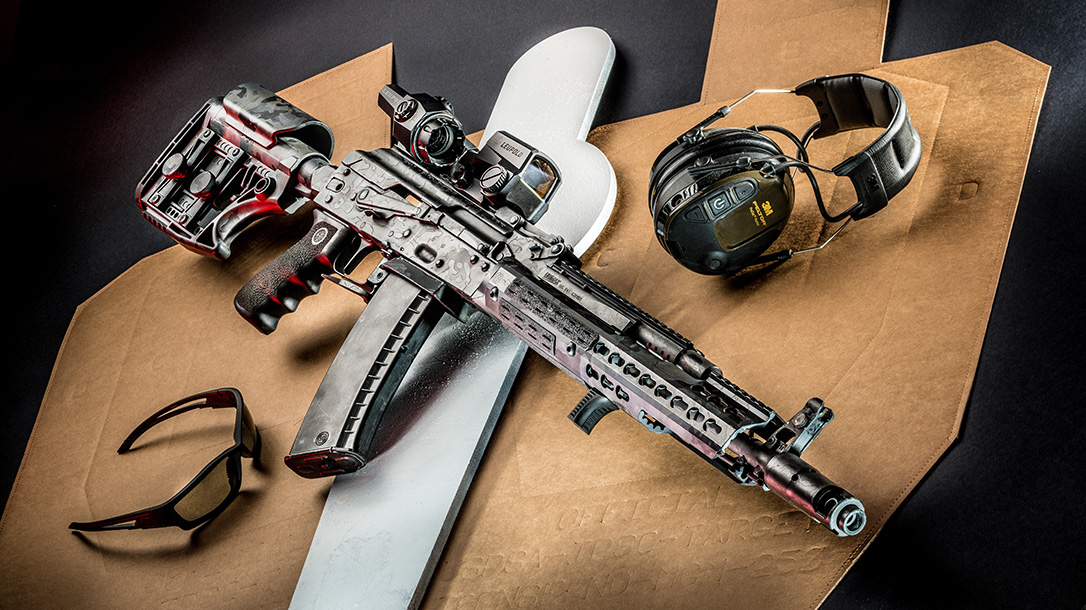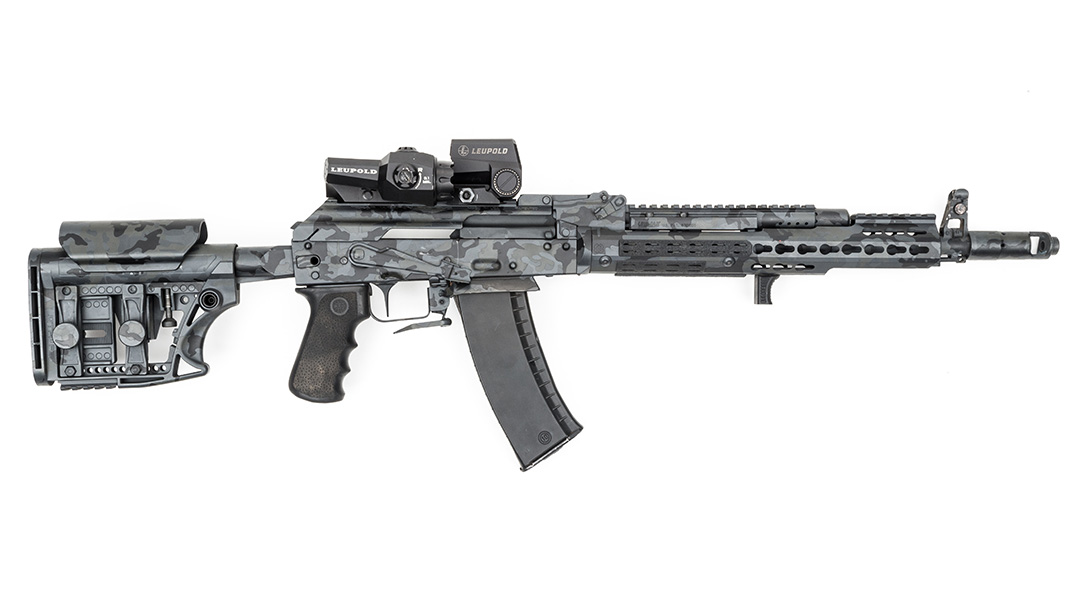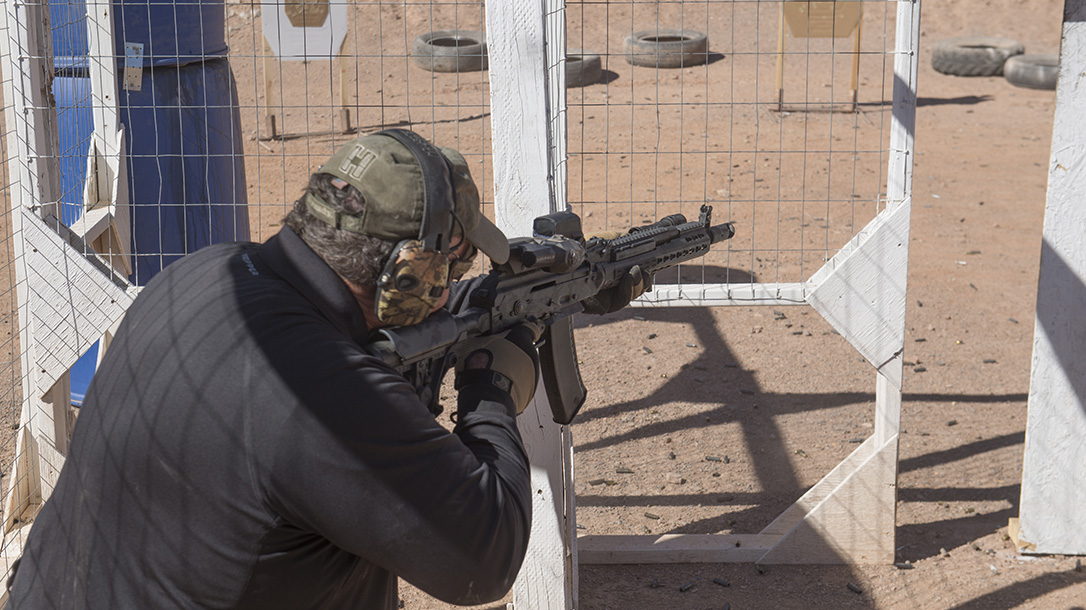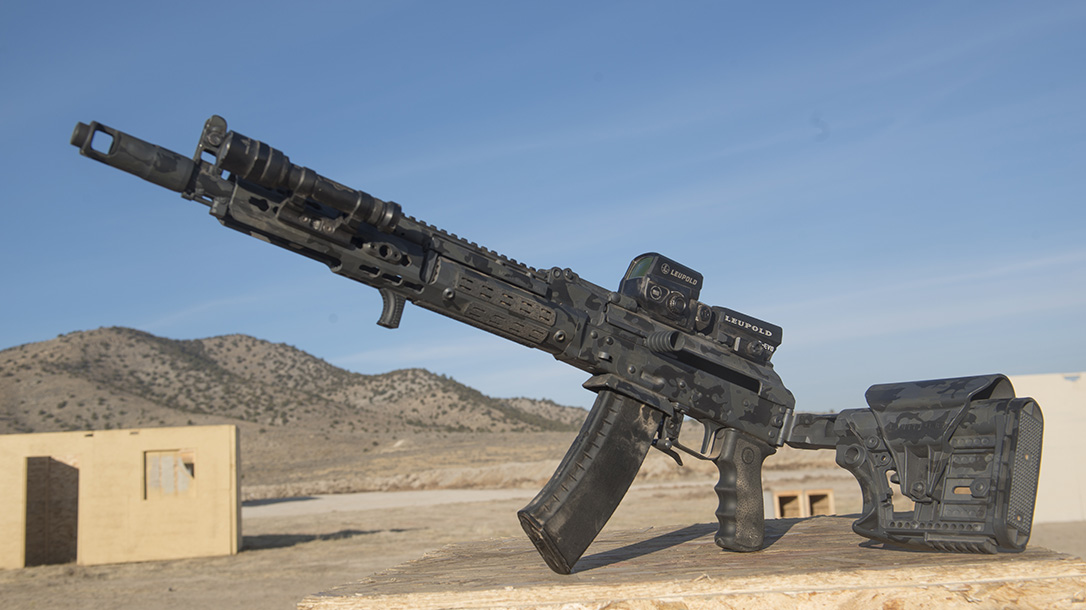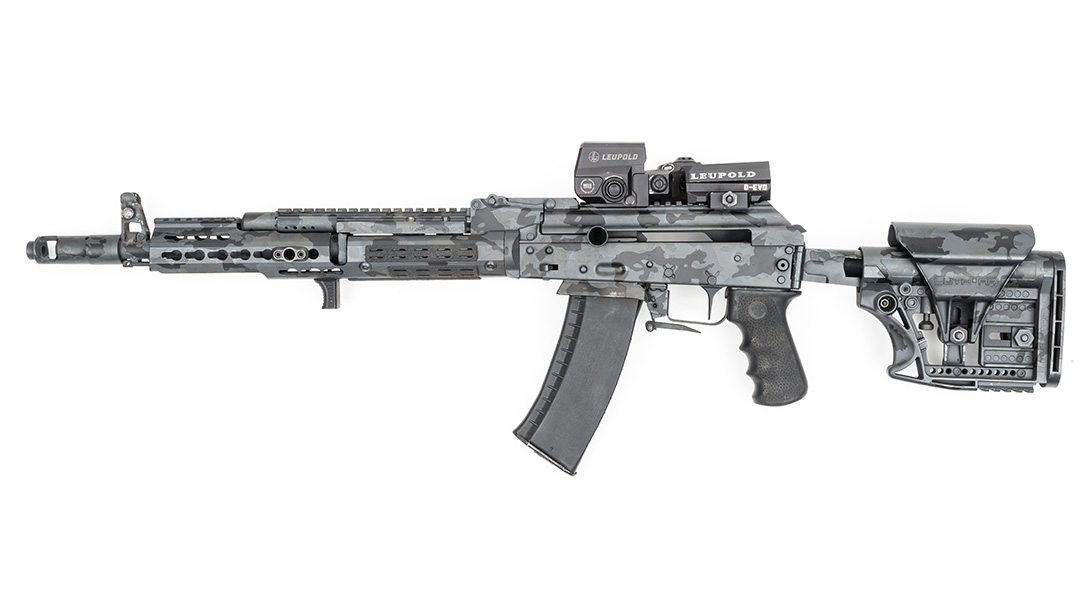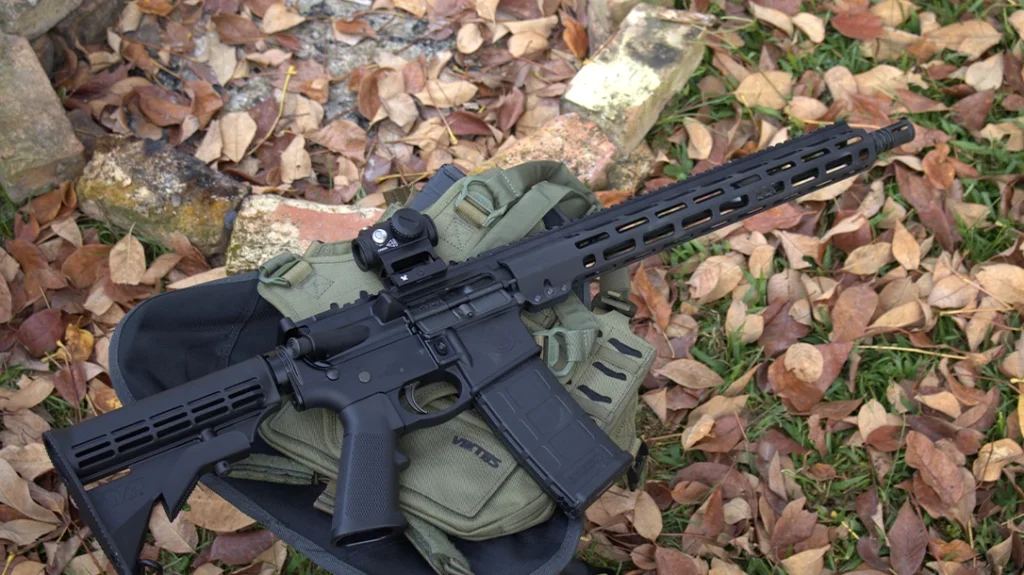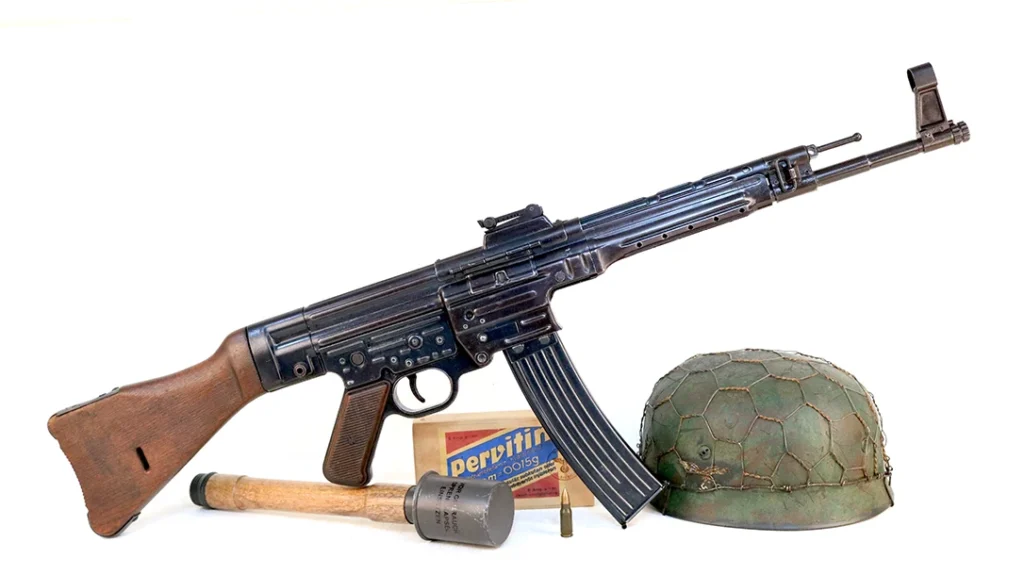Lines have been drawn for years as to the practicality or “tactical value” of firearms competitions. Most are excuses not to compete, or ways to sell training that is “gunfighter” focused. The mantra that “Competing will get you killed in a gunfight!” is overused and meaningless. The problem: Most people teaching “gunfighting” have never been in a gunfight, and fewer have competed in matches.
Losing sucks, and if your ego is big enough, it’s only worse if you look like an amateur while doing it. I spent a couple decades as a police officer, and 10 years competing, so I know how valuable matches can be. Competing with your issued carbine is valuable training, and operating your competition gun tactically is equally useful. All it requires is understanding the results and what they mean. The key is keeping your ego in check while muting the “experts” chattering throughout the firearms industry.
Advertisement — Continue Reading Below
Over the last several years, a market has emerged for solid and reliable alterations to the AK—not just the cheapest plastic crap you can find. Improvements making the AK more reliable, easier to shoot and more user friendly are more readily available. Thanks to bans and import restrictions, American-made parts are much better these days. Purists who considered AKs to be Vietnam-era throwaways are thinning out, much like the early adopters of the AR.
These days, it’s not only possible to buy a quality AK, but you can also have one altered to do practically anything you could want out to 300 yards. My go-to carbine is an AK-74 that was altered for use as a fighting rifle by Joe Firearms. Using an American-made barrel, it is very accurate. It also has a left-side charging handle, an extended magazine release, a mag-well funnel and a crisp, straight trigger, making it a joy to run. The solid top rail accommodates a red-dot sight, and with practice, it’s a fast carbine.
My custom AK-74 made me wonder, “What if you built one designed for matches?” So, I turned to Steve Palano at Joe Firearms, and we did just that. Even better, we ran both at the premier AK competition in the U.S.—the Red Oktober Kalashnikov Championship held in St. George, Utah.
Advertisement — Continue Reading Below
Fully Enhanced
Joe Firearms builds rifles from scratch, but I used my Arsenal SLR104-31 as a base gun. The company started by removing the standard side scope mount, filling in the holes with welds and finishing it off. Then they added a custom magazine release and funnel along with an easily accessible safety. The bolt carrier was altered for left-side charging while maintaining a notch on the right side to hold the bolt open. This allows you to operate the rifle without shifting your strong-hand grip.
Steve then flattened the trigger and tuned it, in this case to a very crisp 3 pounds with a two-stage feel and a short reset. This expert touch ensures the trigger is completely reliable in any condition, and there is nothing to shoot loose. The internals were tuned and then coated with Micro Slick for clean operation.
A long Troy Industries forend was installed, covering most of the barrel and letting me reach a bit farther out with my support hand and use barricades more efficiently. KeyMod slots adorn the sides and bottom, and here I installed a SureFire Scout light as well as a ZeroBravo Reversible Hand Stop (RHS).
Advertisement — Continue Reading Below
The piston tube was replaced with a railed UltiMAK M2-B mount that can hold a reflex sight up front, and the Texas Weapons Systems Gen-3 Dog Leg Rail replaces the rear sight and factory dust cover to accommodate optics in the more traditional location. It’s made of aluminum and hinged so you can access the rifle’s internals without losing your zero.
I kept the factory muzzle brake, but a Trijicon front sight and an Ergo rubber grip were added along with a Manticore Arms F3 stock adapter, allowing for the installation of a Luth-AR MBA-3 carbine stock. This allows me to use optics, a reflex sight or just irons as needed. Finally, the entire AK-74, including the furniture, was given a dark camo Cerakote finish.
I tried out several optics on the upgraded AK-74. A Leupold VX-6 made it easy to regularly get hits out to 500 and 600 yards. It worked well but limited my capabilities up close. Next I tried the Leupold LCO, which was fast, but my older eyes need magnification at 300 yards and beyond. Most targets for AK competitions are close, so the LCO or even irons would be fine, but I wanted some glass just in case. Thus the Leupold D-EVO seemed like a good fit behind the LCO. That way I’d have a red dot for primary targeting and 6X magnification when needed. It mounted solidly to the top rail, and I zeroed it at 100 yards to work with the LCO’s 25-yard zero. Used properly, this pairing is fast; line everything up with the dot, then glance down to find the CMR-W reticle.
Advertisement — Continue Reading Below
First Shots
My initial accuracy testing using Hornady Black and V-MAX rounds yielded groups under 2 inches at 100 yards—just what the rifle did before the custom work. I was able to get a group or two closer to an inch, but the norm was 1.5 to 2 inches. I was able to use the Leupold LCO for hits on steel from 25 to 400 yards. Smaller targets were a stretch, mostly because my 58-year-old eyes see three dots, not one. Up close, the LCO was as fast as any clear glass, with a large field of view, and it was easy to adjust without any special tools.
Glancing down at the D-EVO, it was easy to get hits at 300 yards before moving on to 12-inch steel targets at 500 yards. Stretching my shots out to 600 meters is pushing outside the sweet spot for the 5.45x39mm, but it was doable without any wind. However, at 300 meters and closer—where it really matters—the AK-74 was dead-on.
Advertisement — Continue Reading Below
I also used this range session to zero my self-defense AK-74, also customized by Joe Firearms as I said before, before heading to the competition.
Running & Gunning
The Red Oktober Kalashnikov Championship is billed as before more about fun with an AK than a match, and that held true. There’s lots of running and gun, with some crawling through tubes and under tables thrown in along with some typical 3-Gun stuff. The longest ranges were around 100 yards for mostly iron-sighted rifles, and the targets were generous. It was a lot of fun. Die-hard 3-Gunners weren’t enthralled, but most had a good time. Various divisions allowed for various guns—one guy even ran an RPK, showing quite a bit of irreverence to the more rabid 3-Gun world in general. It was a good test of my theory, though—running a race gun like a tactical rifle, with a twist.
My friend, Ryan, came along to use my Joe-Firearms-customized self-defense AK-74. Equipped with a Leupold DeltaPoint mounted on the Manticore M2-B rail, it’s void of any competition-specific equipment. Ryan has some 3-Gun experience, and he ran the gun just like a competition rifle. We both used the the same ammunition, too: Hornady’s Black and V-MAX rounds.
Advertisement — Continue Reading Below
For Ryan, it was all about time. You don’t get to miss, but you bias towards shooting and being fast, which he is very good at. For me, it was exactly the opposite. I did not move slowly as a rule, but I focused on getting hits on target. No shot was taken without a sight picture. Any movement included proper use of cover where possible, but I didn’t exactly dive into rooms. I kept the safety on when moving, and only took it off to engage. All that mattered to me were first-round hits.
Things worked out pretty much as I expected. Ryan finished 41st overall out of 208 shooters. Many professional shooters finished higher. Another Joe Firearms shooter finished 4th overall. So it’s pretty clear that you can do well playing the game—even without a game gun—if you are skilled. As for me, I did not miss a single target. Outside a procedural mistake (I stepped over a line), it was an almost perfect match. With the exception of a spinner, I got first-round hits on most of the targets. My time, however, suffered considerably even for me, and I finished in 117th place out of 208. For comparison, I tend to finish in the middle of the pack in such matches. I finished 58th in the Open Division.
If you are a practiced and accomplished shooter, you will do well no matter the rifle—within reason, of course. You don’t need a “comp” rifle to do well. Granted, this was different than most AR-style competitions, but in this case—and in local matches—you can do very well with a rifle you use on the job or for self-defense. Don’t shy away just because you don’t have the latest, greatest AR that you need a second mortgage to purchase. If you want to play the game, do it. It’s fun and you’ll meet some great people. So don’t stay away due to your equipment.
Advertisement — Continue Reading Below
Even with a more focused competition rifle, you are going to suffer considerably if you don’t use proven tactics when it comes time to perform. But you can still do well, and you get to work your rifle and your mind during the match. This puts you eons ahead of standing on a square range or calling up your prized guru for the next “combat” class. Think of each problem tactically, and you’ll learn to think on your feet. Building this kind of problem-solving mindset is huge. By the end of Day Two, my movement was pretty solid, and I was getting where I needed to go smoothly and quickly without sprinting. No, I didn’t win, but I also didn’t expect to. I didn’t embarrass myself, and I still did better than accomplished shooters.
The Verdict
I did not experience a single malfunction, failure to feed or anything of the sort with the Joe Firearms AK-74. I didn’t clean the gun during the match, either. Heck, I didn’t even add oil. The rifle was dusty and dirty—one stage included dragging the rifle along the dirt while crawling to the target. The AK-74 wasn’t “babied” by any means, yet it never missed a beat.
Hornady’s ammo runs noticeably cleaner, and there was little recoil using the standard brake. Nothing came loose, no zeroes shifted, and my magazine changes were fast. My control hand never left the rifle, even when it came to using the safety. Even the 3-pound trigger was repeatable and predictable with zero light primer strikes, failures to reset or trigger “slap” (which is common with drop-in triggers). I gave up nothing in terms of speed or accuracy to an AR given reasonable targets inside 300 meters. I’m pretty certain my overall success or time would not have changed using an AR.
Advertisement — Continue Reading Below
Use your personal or deployment rifle to compete. It’s fun, and you can maintain the proper mindset and tactics so long as you aren’t focused on winning. If that’s your goal, get a race gun and play away; just understand that you’ll need to be a bit less tactically focused. If it’s an AK, send it to Joe Firearms, and you’ll get the best of both worlds. Nothing about this enhanced AK-74 limits its practicality in the field, yet it’s great for competitions. That’s what happens when a retired, combat-proven U.S. Army Ranger builds your guns.
Competitors using standard AKs finished 4th, 21st and 27th overall—over rifles costing at least a grand more without any of the features. So if you’re ready to make the switch to a 21st century AK, Joe Firearms is a great place to start. For more information, visit joefirearms.com.
Custom Joe Firearms Competition AK-74 Specs
- Caliber: 5.45x39mm
- Barrel: 16.5 inches
- OA Length: 36.1 inches
- Weight: 7.2 pounds (empty)
- Sights: Tritium front, adjustable rear
- Stocks: Luth-AR MBA-3
- Action: Piston-operated semi-auto
- Finish: Custom Cerakote
- Capacity: 30+1
- MSRP: $2,000 (as tested)
This article is from the spring 2019 issue of Ballistic Magazine. Grab your physical copy at OutdoorGroupStore.com. For digital version, head over to Amazon.
